Overview
The five-year Integrated Interventional Radiology Residency at Mayo Clinic’s campus in Phoenix/Scottsdale, Arizona, provides clinical training in a dynamic department where faculty members are passionate and recognized for teaching. As a resident, you will learn diagnostic radiology and interventional radiology working side by side with outstanding radiologists and allied health staff.
Special features of the program
In addition to Mayo Clinic's favorable faculty ratio and solid academic instruction, state-of-the-art equipment and facilities, and tremendous educational resources, many unique aspects of the program are designed to prepare you for a career in academic interventional radiology or private practice.
Special features of the program include:
- An emphasis on education that ensures that you have the finest teaching and the broadest patient care experience possible during your residency.
- A specially designed curriculum and thorough conference schedule to such that you are prepared for board examinations.
- Dedicated physics curriculum from faculty who literally ‘wrote the book’.
- Extensive research ranging from clinical trials to benchtop translational research to artificial intelligence. Residents have opportunities to work with internationally recognized faculty.
Mayo Clinic in Phoenix/Scottsdale, Arizona, is a destination medical center. The interventional radiology division offers high-level care with a strong presence in interventional oncology and transplant interventions. As a nationally recognized cancer center, interventional oncology is a growing part of our practice with a high volume of ablations and intra-arterial therapies performed for the treatment of tumors. The division works closely with vascular surgery collaborating on complex vascular cases. Mayo Clinic is also a referral center for venous thrombotic disease (acute and chronic) and women’s interventions.
The Interventional Radiology Division has five dedicated physician assistants, two outpatient service nurses, and an inpatient nursing team lead. There are three state-of-the-art angiography suites including a CT/angiography hybrid room. An additional CT scanner is available for CT guided procedures. A fourth angiography suite is slated to open in 2025. An active outpatient interventional radiology clinic with dedicated outpatient clinic space is present, allowing pre-procedural assessment of patients as well as longitudinal care following procedures. A 22-bay holding room is used for pre- and post-procedural care.
Rahmi Oklu, M.D., Ph.D., is the director of the Patient Inspired Engineering Laboratory. The recipient of extensive National Institutes of Health funding, the lab continues to pioneer novel biomaterials to treat a variety of diseases. Some areas of focus include drug delivery and capture, embolic materials, venous thrombosis, and catheter technology. Materials used by interventional radiologists around the world were invented in this lab. This offers extensive research opportunities as an interventional radiology resident. For those interested in gaining teaching experience, Mayo Clinic Alix School of Medicine opened a medical school at the Mayo Clinic campus at Phoenix/Scottsdale, Arizona, in 2017. There are numerous opportunities for you to assist with medical education.
America Board or radiology core exam pass rate
funded trips per resident on average
faculty-to-resident ratio
/prod01/channel_2/media/mccms/content-assets/academics/residencies-and-fellowships/interventional-radiology-integrated-residency-az/int-rad-ind-res-az-1024X512-photo4.jpg)
Certification, program history
Certification
After successfully completing the program, graduates are eligible to take the Interventional Radiology/Diagnostic Radiology (IR/DR) examination offered by the American Board of Radiology (ABR). Since the IR/DR certificate recognizes competency in both diagnostic radiology and interventional radiology, certificate holders can practice both diagnostic radiology and interventional radiology.
Program history
Advanced radiology fellowships at Mayo Clinic in Arizona began in 2000. The Diagnostic Radiology Residency began in 2014 with the first class graduating in 2018. The Interventional Radiology Independent program began in 2020 with two positions each year. In 2024, the Interventional Radiology Integrated program was approved by the ACGME with one position per year.
Application process
Positions
One position is available on a competitive basis each year in the Integrated Interventional Radiology Residency at Mayo Clinic's campus in Arizona.
Qualifications
You can enter the Interventional Radiology Integrated Residency after one year or more of postgraduate training in a clinical medical field. (This is an ‘Advanced’ position).
Also see general admissions requirements for Mayo Clinic School of Graduate Medical Education.
How to apply
In concordance with the National Resident Matching Program (NRMP) All In Policy, the position is filled through the residency match.
The application and all supporting documentation must be submitted by Dec. 1 of the residency match year cycle. Interviews are typically conducted in January.
You must apply through the Electronic Residency Application Service (ERAS).
- Visit the ERAS website. All applications to Mayo Clinic School of Graduate Medical Education programs must include these application materials.
- Appointments are made through the National Resident Matching Program (NRMP). You must register through the NRMP website in addition to applying through ERAS.
- Applicants considered for an appointment will be invited to visit Mayo Clinic for a personal interview with the program director and selected faculty. Interviews are conducted in January.
/prod01/channel_2/media/mccms/content-assets/academics/residencies-and-fellowships/interventional-radiology-integrated-residency-az/int-rad-ind-res-az-1024X512-photo1-edited.jpg)
Curriculum
Clinical training
Your clinical training experience covers all subspecialty areas of diagnostic radiology as well as all subspecialty areas within interventional radiology. You participate in radiological examinations, interpretations and interventional procedures while on rotations in every subspecialty.
The first three years of the Integrated IR program are essentially identical to the Diagnostic Radiology Residency curriculum. In addition to rotations at Mayo Clinic Hospital, you will rotate at Phoenix Children's Hospital for pediatric radiology, St. Joseph Hospital for the trauma rotation and ValleyWise for OB Ultrasound.
The fourth year will transition to more interventional radiology rotations with some diagnostic radiology rotations and the ICU rotation. The fifth year will be entirely interventional radiology rotations and includes interventional radiology away rotations at Phoenix Children’s Hospital, ValleyWise, and Comprehensive Integrated Care.
Didactic training, research training, call frequency
Didactic training
Clinical conferences, formal courses, seminars, small discussion groups, journal clubs, Morbidity and Mortality conferences, and one-on-one instruction are all an integral part of the Interventional Radiology Integrated Residency.
Research training
All residents are required to present a seminar project during their residency that results in at least one publication. Additional options are available if you would like more in-depth research experience.
Call frequency
Your call schedule is different for each rotation. Mayo Clinic follows the recommendations of the Accreditation Council for Graduate Medical Education.
Teaching opportunities, evaluation
Teaching opportunities
Opportunities are available for you to teach rotating junior residents and medical students through daily clinical work and formal didactic lectures.
Evaluation
To ensure that you acquire adequate knowledge and develop the appropriate technical skills to meet program expectations, your performance is monitored carefully during the residency. You are formally evaluated by supervising faculty members after each clinical rotation. In addition, you regularly evaluate the faculty to confirm that your educational needs are being met.
Rotation schedules
Year one
| Blocks | 1 | 2 | 3 | 4 | 5 | 6 | 7 | 8 | 9 | 10 | 11 | 12 | 13 |
|---|---|---|---|---|---|---|---|---|---|---|---|---|---|
| Site | Site #1 MCH | Site #1 MCH | Site #1 MCH | Site #1 MCH | Site #1 MCH | Site #1 MCH | Site #1 MCH | Site #1 MCH | Site #1 MCH | Site #1 MCH | Site #2 MCA | Site #2 MCA | Site #3 PCH |
| Rotation name | ABD-CT | VIR | CTH | NR | NR | BI | MSK | US | US 2 weeks; NM 2 weeks | NM | NM | ABD-GI | PEDS |
| Outpatient % | 75 | 65 | 75 | 75 | 75 | 90 | 75 | 75 | 75/80 | 80 | 75 | 85 | 80 |
| Inpatient % | 20 | 35 | 20 | 20 | 20 | 5 | 20 | 20 | 20/15 | 15 | 20 | 10 | 15 |
| Research % | 5 | 5 | 5 | 5 | 5 | 5 | 5 | 5 | 5/5 | 5 | 5 | 5 | 5 |
Year two
| Blocks | 1 | 2 | 3 | 4 | 5 | 6 | 7 | 8 | 9 | 10 | 11 | 12 | 13 |
|---|---|---|---|---|---|---|---|---|---|---|---|---|---|
| Site | Site #1 MCH | Site #1 MCH | Site #1 MCH | Site #1 MCH | Site #1 MCH | Site #1 MCH | Site #1 MCH | Site #1 MCH | Site #2 MCA | Site #1 MCH; Site #2 MCA | Site #2 MCA | Site #3 PCH | Site #4 SJH; Site #5 BNI |
| Rotation name | ER RAD | CTH | CTH | BI | VIR | MSK | NR | US | NM | ABD-CT 2weeks; ABD-GI 2 weeks | ABD-MR | PEDS | TB 2 weeks; TNR 2 weeks |
| Outpatient % | 90 | 85 | 85 | 90 | 60 | 75 | 75 | 75 | 80 | 75/85 | 80 | 75 | 90 |
| Inpatient % | 5 | 10 | 10 | 5 | 35 | 20 | 20 | 20 | 15 | 20/10 | 15 | 20 | 10 |
| Research % | 5 | 5 | 5 | 5 | 5 | 5 | 5 | 5 | 5 | 5/5 | 5 | 5 | 0 |
Year three
| Blocks | 1 | 2 | 3 | 4 | 5 | 6 | 7 | 8 | 9 | 10 | 11 | 12 | 13 |
|---|---|---|---|---|---|---|---|---|---|---|---|---|---|
| Site | Site #1 MCH | Site #1 MCH | Site #1 MCH | Site #1 MCH | Site #1 MCH | Site #1 MCH | Site #1 MCH | Site #1 MCH | Site #1 MCH | Site #2 MCA | Site #2 MCA | Site #3 PCH | Site #1 MCH; Site #6 VH |
| Rotation name | CTH | CTH | MSK | BI | AIRP | ELEC | ELEC | NR | VIR | ABD-MR | NM | PEDS | US 2 weeks; OB US 2 weeks |
| Outpatient % | 75 | 75 | 75 | 90 | 0 | 0 | 0 | 75 | 60 | 80 | 80 | 75 | 75/90 |
| Inpatient % | 20 | 20 | 20 | 5 | 0 | 0 | 0 | 20 | 35 | 15 | 15 | 20 | 20/5 |
| Research % | 5 | 5 | 5 | 5 | 100 | 100 | 100 | 5 | 5 | 5 | 5 | 5 | 5/5 |
Year four
| Blocks | 1 | 2 | 3 | 4 | 5 | 6 | 7 | 8 | 9 | 10 | 11 | 12 | 13 |
|---|---|---|---|---|---|---|---|---|---|---|---|---|---|
| Site | Site #1 MCH | Site #1 MCH | Site #1 MCH | Site #1 MCH | Site #1 MCH | Site #1 MCH | Site #1 MCH | Site #1 MCH | Site #1 MCH | Site #1 MCH | Site #1 MCH | Site #1 MCH | Site #1 MCH |
| Rotation name | US INT | MSK | ICU | ELEC | ELEC | ELEC | VIR | VIR | VIR | VIR | VIR | VIR | VIR |
| Outpatient % | 75 | 75 | 75 | 75 | 75 | 75 | 60 | 60 | 60 | 60 | 60 | 60 | 60 |
| Inpatient % | 20 | 20 | 20 | 20 | 20 | 20 | 35 | 35 | 35 | 35 | 35 | 35 | 35 |
| Research % | 5 | 5 | 5 | 5 | 5 | 5 | 5 | 5 | 5 | 5 | 5 | 5 | 5 |
Year five
| Blocks | 1 | 2 | 3 | 4 | 5 | 6 | 7 | 8 | 9 | 10 | 11 | 12 | 13 |
|---|---|---|---|---|---|---|---|---|---|---|---|---|---|
| Site | Site #1 MCH | Site #1 MCH | Site #1 MCH | Site #1 MCH | Site #1 MCH | Site #1 MCH | Site #1 MCH | Site #1 MCH | Site #1 MCH | Site #1 MCH 2 weeks; Site #2 MCA 2 weeks | Site #3 PCH | Site #6 VH | Site #7 CIC |
| Rotation name | VIR | VIR | VIR | VIR | VIR | VIR | VIR | ELEC | VS | VI | PEDS IR | TIR | OBL |
| Outpatient % | 60 | 60 | 60 | 60 | 60 | 60 | 60 | 50 | 60 | 50/50 | 40 | 10 | 100 |
| Inpatient % | 35 | 35 | 35 | 35 | 35 | 35 | 35 | 50 | 35 | 50/50 | 60 | 90 | 0 |
| Research % | 5 | 5 | 5 | 5 | 5 | 5 | 5 | 0 | 5 | 0 | 0 | 0 | 0 |
Sites, notes, electives, research, vacation
Sites
- Site #1: Mayo Clinic Hospital (MCH) – Sailendra Naidu, M.D., Program Director
- Site #2: Mayo Clinic (Arizona) (MCA) – Sailendra Naidu, M.D., Site Director
- Site #3: Phoenix Children’s Hospital (PCH) – Lavi Nissim, M.D., Site Director
- Site #4: St. Joseph's Hospital and Medical Center (SJH) – David Kay, M.D., Site Director
- Site #5: Barrow Neurologic Institute (BNI) – Jeremy Hughes, M.D., Site Director
- Site #6: Valleywise Health (VH) – William Romano, M.D., Site Director
- Site #7: Comprehensive Integrated Care (CIC) – Joel Rainwater, M.D., Site Director
Notes
- ABD CT: Abdominal Imaging Computed Tomography
- ABD GI: Abdominal Imaging Gastrointestinal Fluoroscopy
- ABD MR: Abdominal Imaging Magnetic Resonance
- AIRP: American Institute for Radiology-Pathology
- BI: Breast Imaging
- CT: Computed Tomography
- CTH: Cardiothoracic Imaging
- ELEC: Elective
- ER RAD: Emergency Radiology
- GI: Gastrointestinal Fluoroscopy
- ICU: Intensive Care Unit
- MR: Magnetic Resonance
- MSK: Musculoskeletal Imaging
- NM: Nuclear Medicine
- NR: Neuroradiology
- OBL: Office-Based Lab (outpatient IR)
- OB US: Obstetrics Ultrasound
- PEDS: Pediatric Imaging
- PEDS IR: Pediatric Interventional Radiology
- TB: Trauma Body
- TNR: Trauma Neuroradiology
- TIR: Trauma Interventional Radiology
- US: Ultrasound
- US INT: Ultrasound Interventional
- VI: Vascular Imaging and Ultrasound
- VIR: Vascular and Interventional
- VS: Vascular Surgery
Electives
- Year three: Education Elective
- Year four: Abdominal Imaging, Breast Imaging, Cardiothoracic, Nuclear Medicine, Pediatric Radiology, Research
- Year five: Pain Medicine, Vascular and Interventional Radiology, Pediatric IR, Trauma IR, OBL, Vascular Imaging, Research
Research
Research is ongoing and occurs throughout year one through five of residency training.
Vacation
There are 20 vacation days per academic year. Vacation is scheduled through the program coordinator with approval of program director.
/prod01/channel_2/media/mccms/content-assets/academics/residencies-and-fellowships/interventional-radiology-integrated-residency-az/int-rad-ind-res-az-photo2.jpg)
Belonging
At Mayo Clinic, we foster an inclusive working environment and embrace the diversity of all our trainees, faculty, staff, and patients. Our Office of Belonging offers tremendous resources to support our mission of maintaining a welcoming atmosphere for all our employees, including our learners. We strive to provide culturally appropriate care and do our part to reduce healthcare disparities.
/0x0:512x512/prod01/channel_2/media/studio-sites/mccms-reference-guide/512X5121573348_3801872_0024-(1).jpg)
Video: See yourself at Mayo Clinic
5:33
From the program director
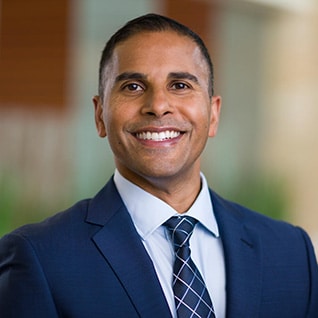 Welcome to the Interventional Radiology Integrated Residency at Mayo Clinic in Phoenix/Scottsdale, Arizona! I am excited to introduce you to our program and I thank you for your interest.
Welcome to the Interventional Radiology Integrated Residency at Mayo Clinic in Phoenix/Scottsdale, Arizona! I am excited to introduce you to our program and I thank you for your interest.
When choosing an IR integrated program, it is important to find an institution strong in diagnostic radiology and interventional radiology. I am proud to say Mayo Clinic in Arizona checks that box!
Both programs have nationally and internationally recognized faculty members who are dedicated to education, research and world-class patient care. Our favorable faculty-to-resident ratio allows for strong mentorship relationships to develop and continue beyond your training. Residents excel and flourish in a supportive environment where education is emphasized. Many of our faculty have been program directors at other nationally recognized programs allowing for a diverse educational experience.
Learn more about the faculty and information on the Diagnostic Radiology Residency program.
The strengths of the interventional radiology division are not only the high volume of cases we perform but also the depth, breadth, and variety of cases we encounter. Our outstanding faculty members are leaders in interventional radiology and passionate about patient care, teaching, and research.
Research opportunities are limitless with the Patient Inspired Engineering Lab at Mayo Clinic under the direction of Dr. Rahmi Oklu. To enhance your educational experience, you will rotate at Maricopa Medical Center, Phoenix Children’s Hospital, and Comprehensive Integrated Care.
Arizona is a wonderful place to live with plenty of great weather and outdoor activities year-round. As the fifth largest metropolitan city in the country, Phoenix offers a variety of amenities including major league sports, arts, culture, and world-class restaurants.
I encourage you to learn more about our program. As a resident at Mayo Clinic, I am confident you will receive excellent training and be well-prepared for your career in interventional radiology.
Sailendra Naidu, M.D.
Interventional Radiology Integrated Residency Program Director
Professor of Radiology
Department and faculty
Mayo Clinic in Arizona and its staff provide the highest-quality diagnostic and interventional services in a caring and efficient manner while sustaining outstanding programs in research and education.
The Department is fully integrated with all the medical services available at Mayo Clinic's campus in Phoenix/Scottsdale, Arizona. More than 65 diagnostic and interventional radiologists and four medical physicists cooperate with hundreds of support staff to provide diagnostic and interventional radiology services to patients.
Meet the faculty
In addition to caring for patients in clinical practice, Mayo Clinic's interventional radiology faculty is committed to teaching and facilitating the growth of medical knowledge. Many of our faculty members have published and lectured extensively and are highly regarded in their fields. You will work closely with these individuals throughout your training in the Interventional Radiology Integrated Residency. You will have direct access to radiology faculty throughout the training program.
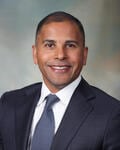 |
Sailendra Naidu, M.D.Program DirectorInterests: Men’s health including prostate artery embolization, geniculate artery embolization, portal hypertensive procedures including TIPS, treatment of aneurysms, interventional oncology, treatment of DVT/PE, vascular diseases including vasculitis, vascular imaging
|
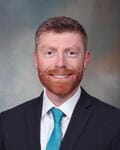 |
Alex Wallace, M.D.Associate Program DirectorInterests: Data driven quality and system improvement artificial intelligence applications in research and clinical outcomes, robotic assisted interventional procedures digital twins in healthcare, 3D printing for simulation, education, patient experience, and clinical use pulmonary embolism response teams
|
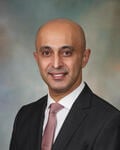 |
Sadeer Alzubaidi, M.D.Interests: Treatment of primary and secondary liver cancer, renal artery angioplasty and stenting, percutaneous ablation of lung, liver and renal tumors, percutaneous gastrotomies and gastrojejunostomies, percutaneous drainage and biopsy, TIPS, central venous access
|
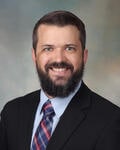 |
Daniel Crawford, M.D.Interests: lymphatic interventions, interventional oncology, musculoskeletal interventions, genitourinary interventions, hepatobiliary interventions
|
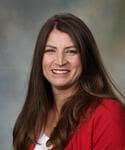 |
Martha-Gracia Knuttinen, M.D., Ph.D.Interests: Women’s health- including uterine fibroids, chronic pelvic pain, enterocutaneous fistulas, venous work, health disparities, diversity, equity and inclusion, Spanish languages
|
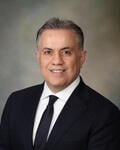 |
Rahmi Oklu, M.D., Ph.D.Interests: Peripheral vascular disease, venous diseases, vascular malformation, cancer (chemoembolization, biopsy, radioembolization, bland embolization, percutaneous ablation, uterine artery embolization for treatment of fibroids, bariatric and prostate embolization, research: bioengineering, medical devices, 3D printing
|
 |
Merve Ozen, M.D.Interests: Liver and kidney cancer treatments, portal hypertension treatments including TIPS, RTO, uterine fibroid and adenomyosis management, palliative cancer treatments, arterial and venous stenting, bone lesion treatments including ablation, kyphoplasty and cryoablation, biliary interventions
|
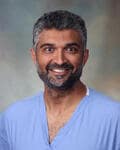 |
Intravadan Patel, M.D.Interests: Peripheral vascular disease, venous diseases, vascular malformations, cancer (chemoembolization, radioembolization, bland embolization, percutaneous ablation), uterine artery embolization for treatment of fibroids, prostate artery embolization for benign prostatic hypertrophy, MRI-guided interventions |
/0x0:512x512/prod01/channel_2/media/mccms/content-assets/academics/residencies-and-fellowships/512X512-1537720_3454815_0001R.jpg)
Video: The Arizona Experience
2:30
Wellness initiatives
As a trainee, your physical and mental health are priorities to Mayo Clinic and the department. Trainees have access to several resources to promote well-being, as well as time off clinical duties to attend appointments.
- Fitness centers
- Groups on campus
- Well-being
Fitness centers
 As a resident or fellow at Mayo Clinic in Arizona, you have access to an exclusive learners-only gym and wellness center conveniently located in Phoenix. Additionally, Mayo Clinic residents or fellows at our three campuses get discounted membership fees to area gyms through PerkSpot, the Mayo Clinic employee discount program.
As a resident or fellow at Mayo Clinic in Arizona, you have access to an exclusive learners-only gym and wellness center conveniently located in Phoenix. Additionally, Mayo Clinic residents or fellows at our three campuses get discounted membership fees to area gyms through PerkSpot, the Mayo Clinic employee discount program.
All Mayo employees, including Arizona learners, can also sign up to take live virtual fitness classes or view recorded fitness classes offered by the Dan Abraham Healthy Living Center (DAHLC).
Groups on campus
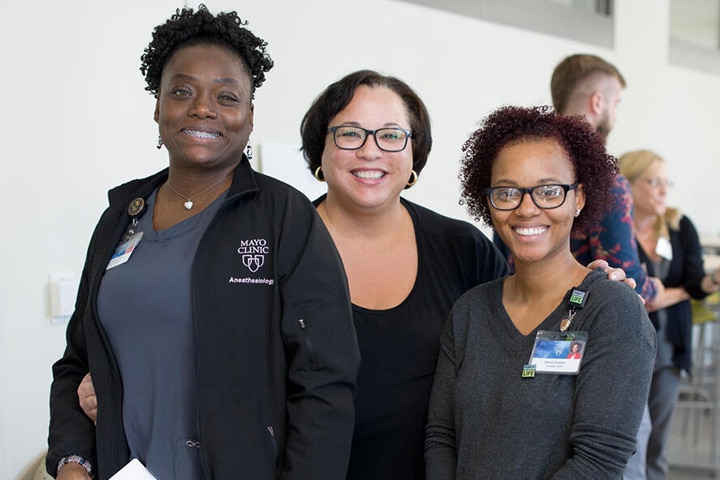 Opportunities to join a variety of groups on campus provide regular social activities and can help enhance your training while connecting with a broad group of peers.
Opportunities to join a variety of groups on campus provide regular social activities and can help enhance your training while connecting with a broad group of peers.
Trainees have the opportunity to join a Mayo Employee Resource Group (MERG) at any time during their training program. MERGs are employee-led affinity groups to promote belonging, increase cultural awareness, and foster an environment of respect and inclusivity. Any Mayo Clinic employee can join a group of interest and choose their level of involvement.
Well-being
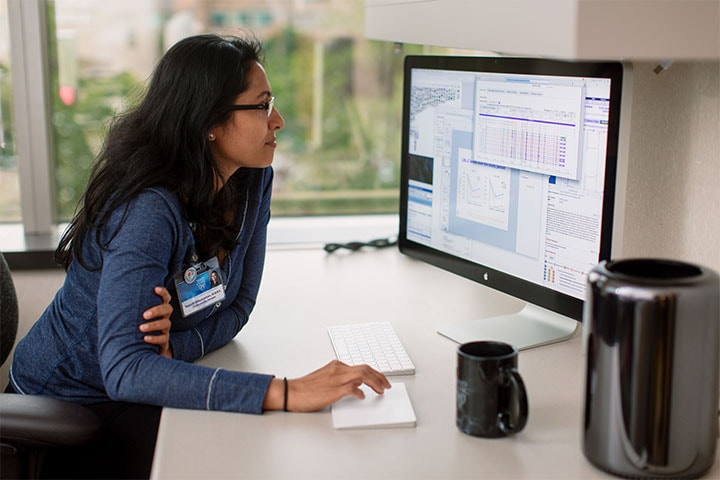 The Office of Academic Support and Well-Being provides resources to promote academic, emotional, social, cognitive, financial, and physical well-being. Career and academic services include academic advising, peer tutoring, and accommodations for learners with disabilities or health conditions. Mental health services, counseling, interview practice, and a variety of enrichment sessions on topics like budgeting, resiliency, and stress and burn-out are also available through the Academic Support and Well-Being office.
The Office of Academic Support and Well-Being provides resources to promote academic, emotional, social, cognitive, financial, and physical well-being. Career and academic services include academic advising, peer tutoring, and accommodations for learners with disabilities or health conditions. Mental health services, counseling, interview practice, and a variety of enrichment sessions on topics like budgeting, resiliency, and stress and burn-out are also available through the Academic Support and Well-Being office.
More from Mayo Clinic School of Graduate Medical Education
/0x0:512x512/prod01/channel_2/media/mccms/content-assets/academics/residencies-and-fellowships/3319834_0363-512X512.jpg)
Choosing Mayo Clinic
/0x0:512x512/prod01/channel_2/media/mccms/content-assets/shared-documents/campus-AZ-3180811-0001-pic-tile.jpg)
Phoenix/Scottsdale, AZ
Campus and community/0x0:512x512/prod01/channel_2/media/studio-sites/mccms-reference-guide/512X5121676671_3824027_0010_C.jpg)
Stipend and benefits
Mayo Fellows Association (MFA)
The Mayo Fellows Association (MFA) offers a peer and social support network for residents and fellows and their families with social events, athletics, and advocacy. The MFA also holds an annual resident and fellow appreciation event open to all trainees with complimentary massages, stress-reducing activities, and social support.
/0x0:512x512/prod01/channel_2/media/mccms/content-assets/academics/residencies-and-fellowships/interventional-radiology-integrated-residency-az/int-rad-ind-res-az-512X512-photo3.jpg)
/0x0:440x220/prod01/channel_2/media/mccms/content-assets/campus-amp-community/arizona/440X220_sidebar-mayo-clinic-phoenix-arizona-is453080663.jpg)